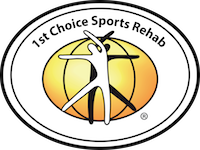by Hamid L. Sadri, DC, CCSP, ICSSD, CSCS, CKTP, CES, PES
By definition, plantar fasciitis means inflammation of the fascial tissues of the bottom of the foot. Although the name is used in many instances when foot or heel pain is experienced by an individual, the actual condition does have a rather classical and somewhat specific presentation. In a true classical case of plantar fasciitis, there is inflammation of the actual plantar fascia, which is located either on the inside or on the outside part of the bottom of the foot; or another structure called the plantar aponeurosis (the hard and tough bands of fiber felt at the middle of the bottom of the foot), or at times one of the muscles in the foot called flexor digitorum brevis; all of which have an attachment to the heel bone (calcaneus).
The exact cause of plantar fasciitis is still not known.T he most acceptable theory is that of a “Repetitive Sprain/Strain Injury” (RSI) and the population most frequently affected by this seem to be endurance athletes, more specifically runners, followed by basketball players.Non-athletic women are also likely to develop this condition.
The presentation of the condition typically follows the pattern of intermittent heel or medial foot pain of several days to several months duration, which becomes chronic and recurring in many instances.There is usually considerable discomfort upon standing up after a night’s rest, or even after prolonged sitting.This seems to improve within a few minutes of weight bearing activity but will usually worsen by the end of the day.There may also be sensations of achy and tired feet, pin-point pain at the center of the heel, and cramping of the calf or foot muscles.
Diagnosis of the condition is usually made by the history of complaints as reported by the patient, which will follow the above mentioned pattern.There will usually be a painful point under the heel of the affected foot. The symptoms may also be increased by rising up on the toes or by bending the ankle, the foot and the toes back, causing a stretching of the tissues at the bottom of the foot. If the condition is not resolved properly, there may be excessive bone growth (calcaneal bone spur) that could develop at the heel. The spur, if present may not be palpated in most cases.However, it may be visualized on an x-ray or an MRI. It should be kept in mind that these spurs may be fibrocartilagenous, calcific, or bony (ossified) in nature. The difference is that the first two types can, and often do, cause pain at the heel while the last one in most cases is not symptomatic. Although the pain may be severe and exquisite in most cases, there is no bruising or swelling visible to the naked eye as one may suspect.
There are many other conditions that may cause foot or heel pain (rheumatoid arthritis, stress fractures, gout, Sever’s disease, Reiters syndrome, calcaneal bursitis, tarsal tunnel syndrome, etc.), which makes a proper diagnosis, as always, the key to successful treatment and resolution of the condition. Once the correct diagnosis has been made, several options for treatment are available. While some of these treatments will simply help with the reduction of symptoms, others will actually help address the underlying cause. Some of the common treatments of plantar fasciitis that can be tried by the patients (with varying degrees of success/failure) include:
- Stretching and/or strengthening of the calf and foot muscles (many different exercises/routines are available and may be tried-some with more success than others.For example, calf stretches, rolling a golf ball or a tennis ball under the foot, heel-drops or toe raises, toe taps and foot curls are only a few of many of the routines that can be implemented)
- Foot/ankle splints (posterior night splints) worn at night to help stretch the calf muscles
- Donuts or gel pads under the heel
- Soft arch support
- Ice massage (rolling foot back and forth for a few minutes on a frozen bottle of water)
- Rest from the offending activity (running, jumping or prolonged standing)
Other treatment methods which are offered in a clinical setting may include:
- Therapeutic ultrasound
- Phonophoresis or iontophoresis
- Trigger point massage
- Anti-inflammatory medications (frequently ineffective)
- Casting (not a common method and not one I would recommend unless all else has failed)
- Steroid injections-should be avoided as they cause damage to the tissue and will weaken it, which may result in the condition becoming worse or even tissue tears.
- Custom made orthotics
- Taping of the arch or the plantar aponeurosis
- Myofascial release techniques such as Active Release Techniques (A.R.T.) and Graston Technique have been shown extremely effective
- Biomechanical correction of joint function, typically involving joint manipulations of the foot, ankle, knee, hip or pelvis are usually helpful and often needed
- Walking and running gait analysis and corrections are needed for the athletes with this condition
- Surgery has been tried with varying results (typically less than optimal outcomes)
- For more difficult cases that may fail to respond to the above combination of treatments a procedure called “Extracorporeal Lithotripsy” may offer some relief
Considering that a large portion of our practice is made up of endurance athletes, we have seen and successfully treated many cases of plantar fasciitis with a combination of the conservative methods mentioned above. Once again, early and accurate diagnosis and proper treatment of the cause and the symptoms of this condition is the key to successful resolution of it.
Dr. Sadri has been practicing in Decatur, GA for 25 years and specializes in athletic injuries and rehab. The clinic, 1st Choice Sports Rehab Center, was named “The Best Sports Injury Center in the Southeast” by Competitor Magazine. To subscribe to our newsletter click here. To schedule an evaluation, call 404-377-0011.
Related Articles:
